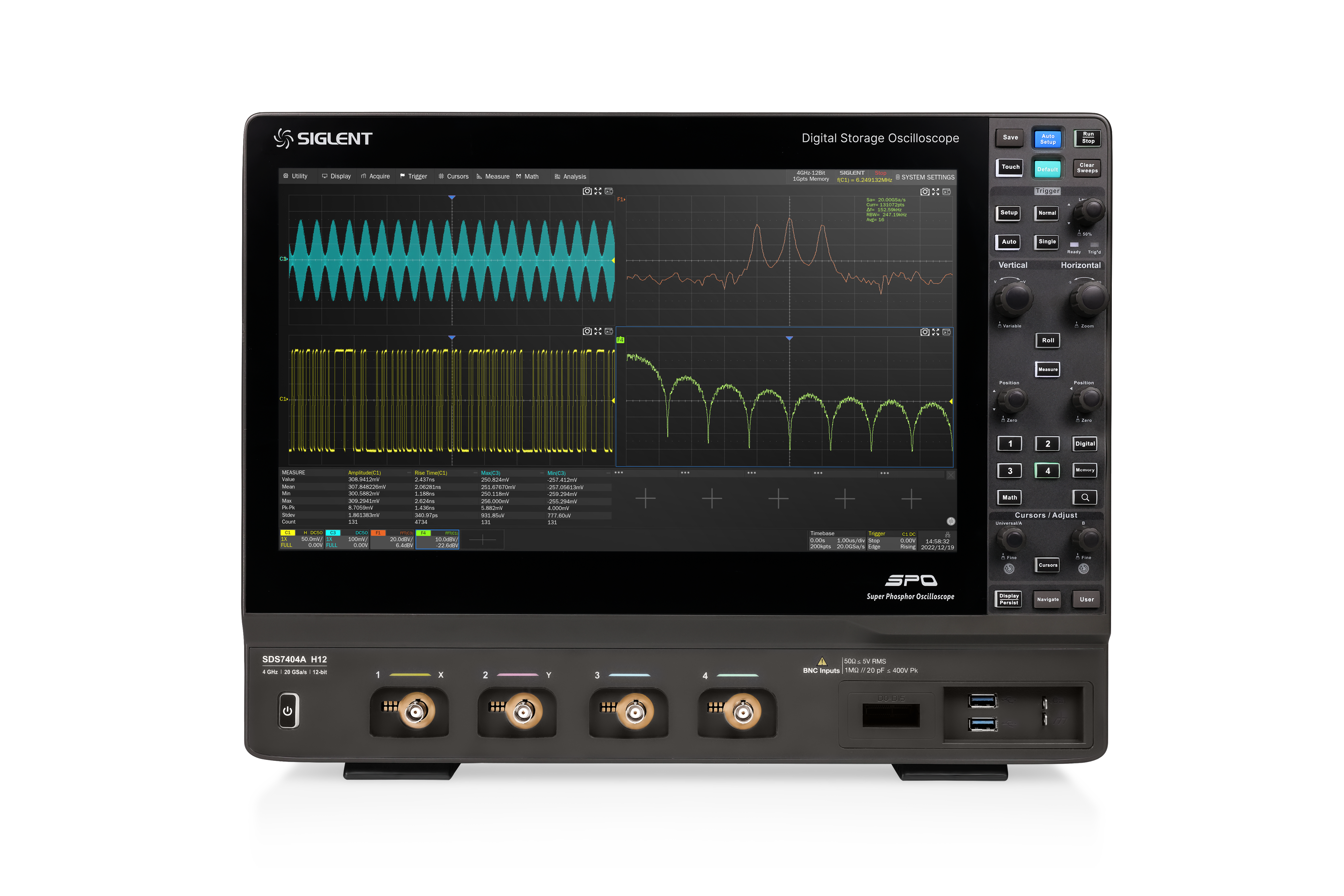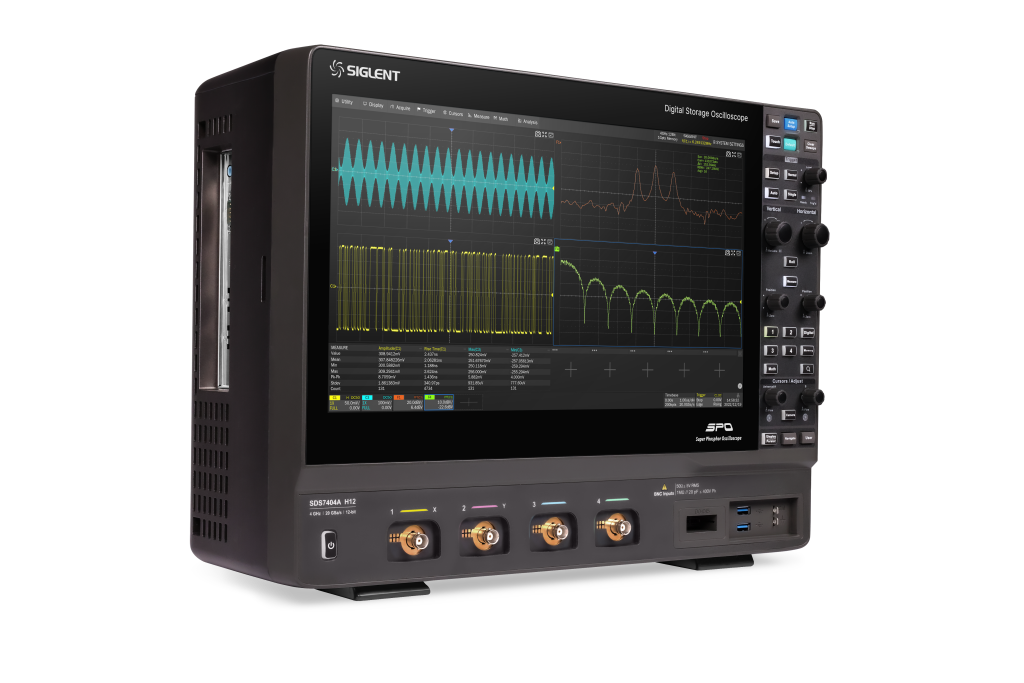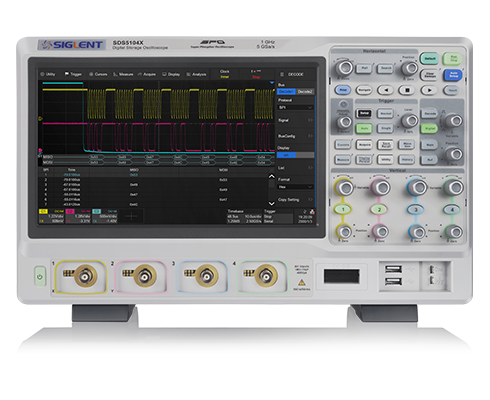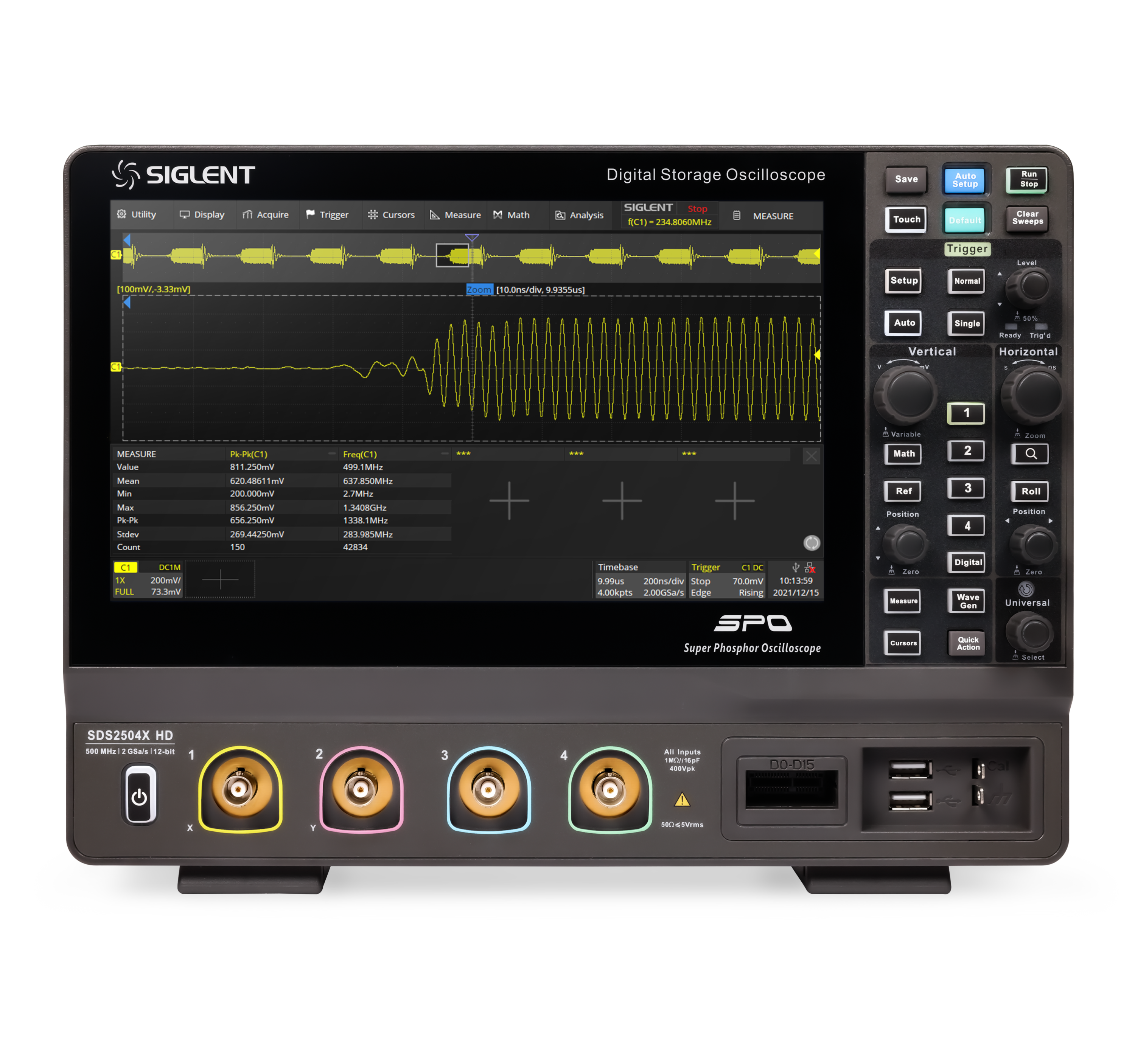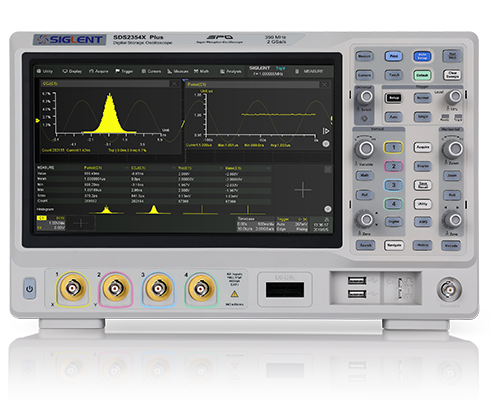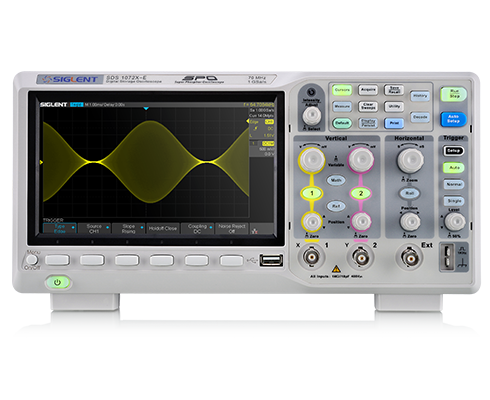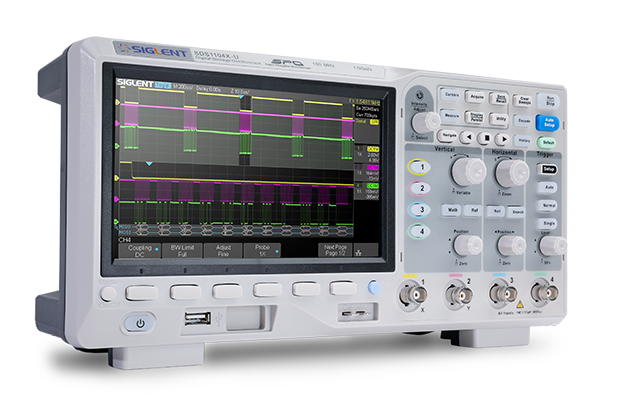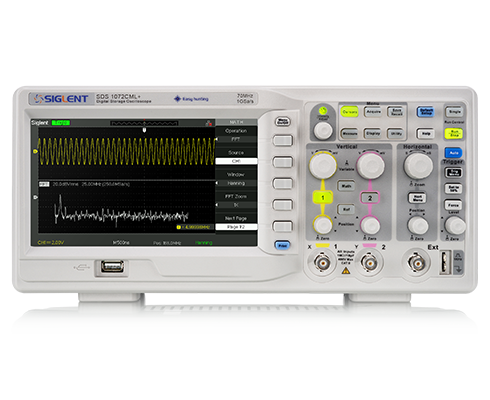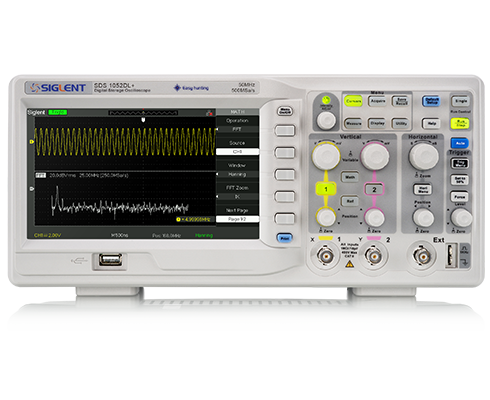Welcome to a new generation of SPO technology.
SIGLENT oscilloscopes feature innovative digital trigger systems with high sensitivity and low jitter, high waveform capture rates (up-to 1,000,000 wfm/s (normal mode), 1,100,000 wfm/s (sequence mode)), Many also employ the common 256-level intensity grading display function and color temperature display mode to make troubleshooting even easier.
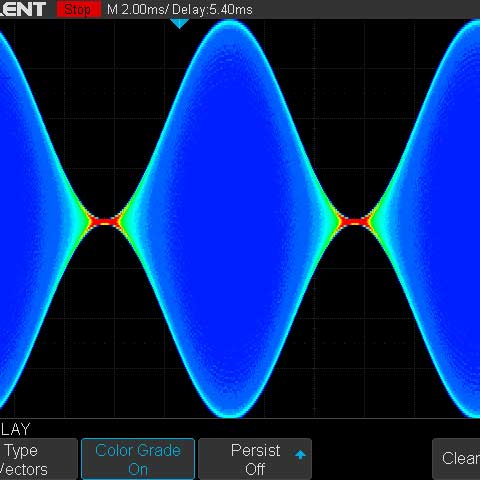
Bright Color Temperature Mode
Event frequency indicated by color temperature. "Hot" colors (red) identify frequent events while "cool" (blue) colors are reserved for events that occur less often.
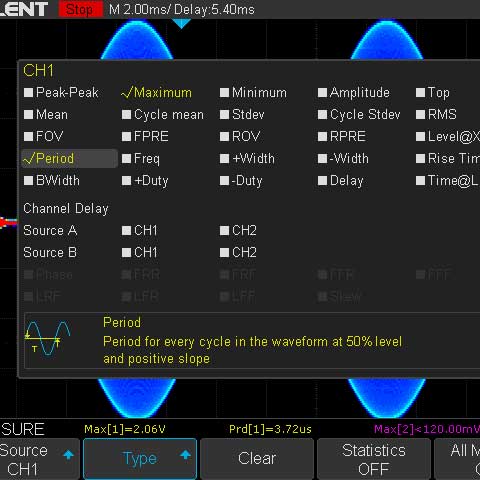
Easy Auto-Measurements
Quickly add one of over 30 automatic measurements like peak voltage, frequency, and more
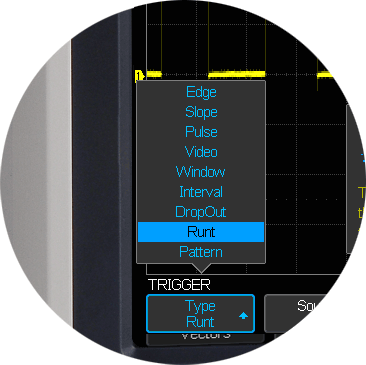
Intelligent Triggers
Edge, Slope, Pulse, Window, Runt, Interval Dropout, Pattern, Video (HDTV supported), and serial trigger modes on many of our oscilloscopes
| Series | Bandwidth | Channels | Real time sampling rate |
Capture rate | Memory depth | Price |
|---|---|---|---|---|---|---|
| SDS7000A Series | 3 GHz,4 GHz | 4+EXT | 20 GSa/s (dual-channel) | 1,000,000 wfm/s | Standard: 500 Mpts/ch Optional: 1 Gpts/ch | €18,990 - €24,690 |
| SDS6000A Series | 500 MHz, 1 GHz, 2 GHz | 4+EXT | 5 GSa/s (10 GSa/s ESR) per channel | Normal mode: 170,000 wfm/s; Sequence mode: 750,000 wfm/s | 500 Mpts | €6,480 - €9,980 |
| SDS6000L Series | 500 MHz, 1 GHz, 2 GHz | 8/4+EXT | 5 GSa/s (10 GSa/s ESR) @ each channel | 170,000 wfm/s (Normal mode), 750,000 wfm/s (Sequence mode) | 500 Mpts | €7,380 - €29,280 |
| SDS5000X Series | 350 MHz, 500 MHz, 1 GHz | 2+EXT, 4+EXT | 5 GSa/s | 140,000 wfm/s (normal mode), and 480,000 wfm/s (sequence mode) | 250 Mpts | €2,869 - €6,359 |
| SDS3000X HD Series | 350 MHz, 500 MHz, 1 GHz | 4 + EXT | 4 GSa/s | 890,000 wfm/s | 400 Mpts/ch | €3,380 - €5,980 |
| SDS2000X HD Series | 200MHz, 350MHz | 4+EXT | 2 GSa/s | 500000 wfm/s (sequence mode) | 200 Mpts/ch | €1,880 - €2,880 |
| SDS2000X Plus Series | 100 MHz, 200 MHz, 350 MHz(upgradable to 500 MHz) models | 2/4 + EXT | 2 GSa/s | 120,000 wfm/s | 200 Mpts/ch | €899 - €1,999 |
| SDS1000X HD Series | 100 MHz,200 MHz | 2/4 + EXT | 2 GSa/s | 500,000 wfm/s | 100 Mpts/ch | €959 - €1,299 |
| SDS800X HD Series | 70, 100, 200 MHz | 2/4 | 2 GSa/s | 500,000 wfm/s | 50 Mpts/ch | €359 - €699 |
| SDS1000X-E | 100, 200 MHz | 2 +EXT, 4 + 16 digital channels (optional) | 1 GSa/s | 100000 wfm/s (normal mode), 400000 wfm/s (sequence mode) |
14 Mpts | €319 - €659 |
| SDS 1104X-U | 100 MHz | 4 | 1 GSa/s | 4 00,000 wfm/s | 14 Mpts | €359 |
| SDS1000CML+ | 70, 100, 150 MHz | 2+EXT | up to 1 GSa/s | up to 2 Mpts | €279 - €389 | |
| SDS1000DL+ | 50 MHz | 2 | 500 MSa/s | 32 kpts | €259 |

